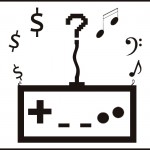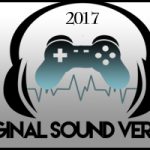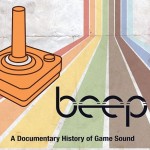
Motoi Sakuraba has been writing video game music for many years, and he is among the most prolific composers in the video game world. His body of work spans games released over a period of more than 20 years, and includes a wide variety of genres, from Japanese RPGs to sports and action games. A lot of his work is his own compositions for various games, but he has also done some work as an arranger and as a producer.
Since his work spans so many games, Motoi Sakuraba is adept at adapting to different styles suited for different genres. But there are many elements of his style that you can see across his different compositions as well. I will be going through some of these elements briefly, and attempt to shed some light on what makes Motoi Sakuraba’s music sound like Motoi Sakuraba.
Sakuraba got his start in music not in video game music, but in progressive rock. He began a progressive rock band while he was still in university, and they did release one album: Baroque in the Future by Deja Vu, with music composed by Sakuraba. Afterward he moved on to writing music for video games, but his roots in progressive rock continue to show in a lot of his music, particularly in his battle themes. Progressive rock is probably his most obvious influence, but there are also elements of Jazz, Classical, and other styles in his compositions.
I’m going to go through a couple of his tracks to try to pick out some of his most characteristic musical ideas and compare how aspects of his style manifest themselves in different situations. His body of work is so large that I will only be able to cover a couple of examples, but this should serve as a basic overview of some of the most prominent aspects of his style.
Let’s start with a battle track. These in particular usually show off Sakuraba’s background in progressive rock really well. Take a listen to “Full Force” from Tales of Symphonia.
This is a good example because it includes a lot of Sakuraba’s favorite figures and techniques. First, listen to the overall feel of the track. Notice the rock drum pattern, the upbeat bass line, and the choice of the synthesizer sound in the melody. The whole track could easily be mistaken for a progressive rock song, and this is pretty standard fare for Sakuraba’s battle music.
The music isn’t just rock though. He does add some other touches, such as the oboe in the melody and some subtle string accompaniment near the end, to give the track its own (although still distinctly Sakuraba) feel. These choices of instrumentation give the track some character, but they also help serve the goal of the soundtrack as a whole. Using non-rock instruments that are used elsewhere in the game’s soundtrack helps give the soundtrack some consistency and helps make it feel like a cohesive whole as tracks transition from one to the other.
There are some other specific touches that sound very much like Sakuraba on first listen. The opening is a classic figure he uses in many tracks, both upbeat and calm. He takes a chord with a suspension, resolves the suspension, and then rather than moving to the next chord that you might expect, he immediately ascends upwards a step and repeats this figure with another suspension. He uses this commonly in openings, and also as a way to transition from one section of a track to the next.
If you really want to hear this motif in full force, check out “Fly!” from his solo piano album Forest of Glass; the entire intro is exactly this figure, so it should really help clarify what I am describing.
This track is also a good example of one of the ways that he writes melodies. Motoi Sakuraba has pretty varied melodic writing, and this track specifically is a pretty good example of his more instrumental type of melody. This sort of melody is characterized by many short runs broken up by short pauses where the melody will hold a note or do a slower short phrase. This kind of melody isn’t really a melody that you would be able to sing or hum easily, though generally they are fairly memorable; they’re written for instruments, and often draw a little bit from a classical style of instrumental writing.
Now, I’m going to bring up another upbeat track from another video game series; listen to the theme from Mario Tennis:
Can you hear some of the similarities? It has a bit of the same sort of rock feel, with an upbeat drum pattern. But this track is geared toward a different style of game, so Sakuraba makes some changes. You’ll see that synthesizer sounds are not very prominent here overall; rather, the track features mostly brass, and in the middle section the steel drums come in, which helps give the track a “Mario” feel.
The melody features one of Sakuraba’s favorite rhythmic motifs; a 3+3+2 pattern. Listen to the 2nd, 3rd, and 4th notes of the melody; they are playing the pattern I’m describing. It’s almost like a triplet, but it’s skewed slightly so that the first two notes are slightly longer than the last note. If you listen to almost any Motoi Sakuraba soundtrack, you are bound to hear this frequently in his melodies, and this is actually one of the first things that signals to me that a piece was written by him. I’ll just throw out one example: check out “Jenna’s Battle Theme” from Golden Sun: The Lost Age. This melody uses this figure really prominently right in the opening.
The last major example I will discuss in detail is “Limpidly Flow” from Baten Kaitos: Eternal Wings and the Lost Ocean for Gamecube.
I bring this one up to discuss a couple of things. First, as I have already mentioned, Sakuraba is quite good at adapting his style for different genres, and also at maintaining a style within a game series, like he does with the steel drums in the Mario sports games music for example. This is a good example of a track that is slightly different from what I have covered already that also does this. In the fairly short Baten Kaitos series (only two games to date), Sakuraba frequently gives the violin the melody, and pairs it with a wide range of accompaniments. In this game, the battle theme features violin on the melody, with a typical Sakuraba-esque progressive rock accompaniment (it also happens to be one of my personal favorites).
Here, the violin plays a sorrowful melody with a light piano accompaniment. The violin is also featured in several other tracks across both soundtracks. There are some other elements that are shared in the overall soundtracks to these games, like the use of choir for example, and these elements come together to create a distinct “feel” for the Baten Kaitos series. While it may still sound quite a bit like Motoi Sakuraba, it helps provide the game with its own unique atmosphere.
This track gives another side of Motoi Sakuraba’s writing; there are no progressive rock elements here. The violin plays a good example of one of his more lyrical melodies, both memorable and singable. The harmonies are more consistent, with fewer modulations and unexpected transitions, all in line with a track suited to a more relaxed atmosphere.
The overall form shows something else that is typical for Sakuraba; many of his compositions have little repetition in the middle. In this instance, the time it takes for this track to begin looping is is about 2:14, which is quite long for video game standards. None of the material in the middle repeats before the loop time is up, which isn’t uncommon. He will often write pieces that move from one unique section to the next, never repeating until the track loops. This makes a lot of his tracks longer (may soundtrack releases of his music will only loop 1.5x or not at all, instead of the typical 2x), and this also helps his music sound more varied.
What I’ve covered are just some of his with which I am familiar that feature some of what I see as his most common musical elements.. There are other common motifs and techniques that he uses for different occasions, and he also has some tracks that hardly show any of his more common style elements; listen to “Pinwheel” from Dark Souls for example. This track employs almost none of the techniques that I’ve discussed above, and sounds very different from most of the music with which I associate Sakuraba.
I bring this up just to show that even though I am able to pull out some elements of style that are consistent across many of Sakuraba’s compositions, he is also very skilled at adapting his music to different styles and situations for all of the different types of games for which he writes music. What I have provided is really just a brief glance at some of his most common techniques, but there is so much more that you could dig into. He is an incredibly prolific composer with a very diverse body of work, and I’ve only scratched the surface of some of the games with which I am familiar.
The next time you play a game featuring his music, have a listen and see if you can pick out any of the things I’ve mentioned. You’re bound to find them embedded in expected and unexpected sections of all of his music, and when you do, maybe you’ll notice and think, “Yes, that sounds like Motoi Sakuraba!”
Tags: Baten Kaitos, Dark Souls, Features, Forest of Glass, Game Composers, Game Music, JRPG, Motoi Sakuraba, Music Composition, Tales of Symphonia







































